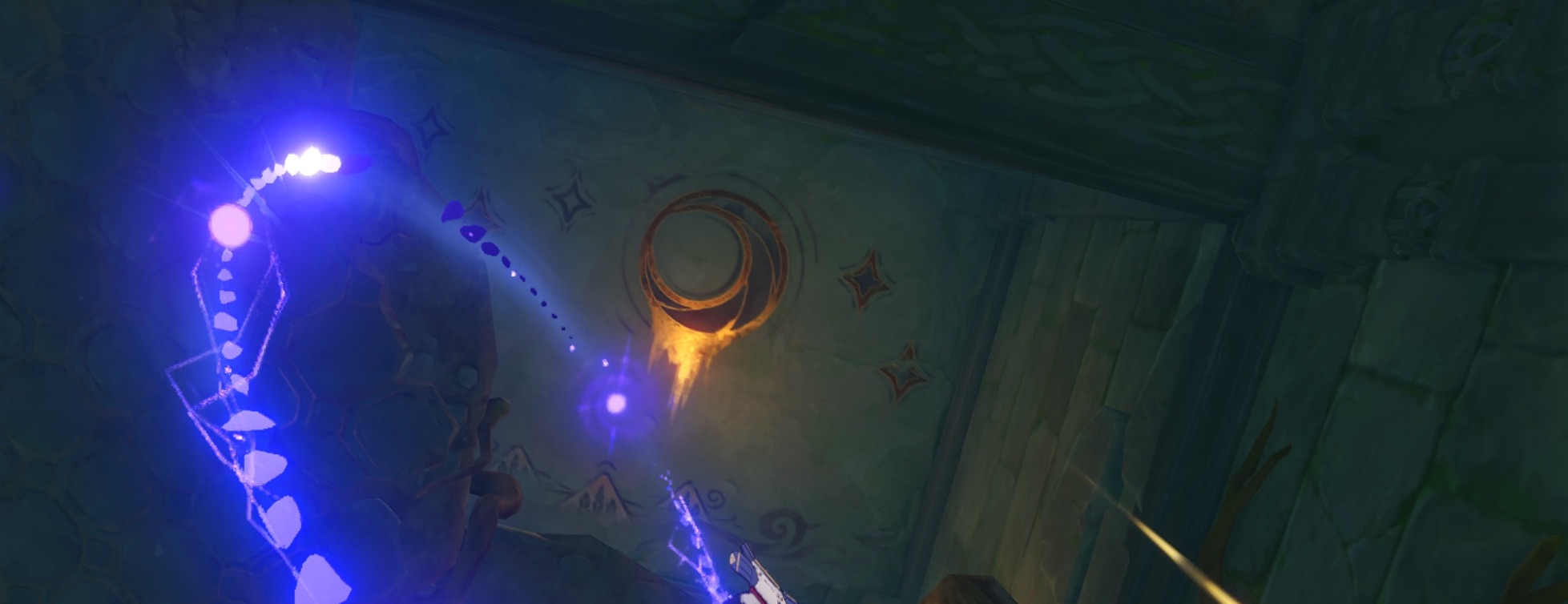
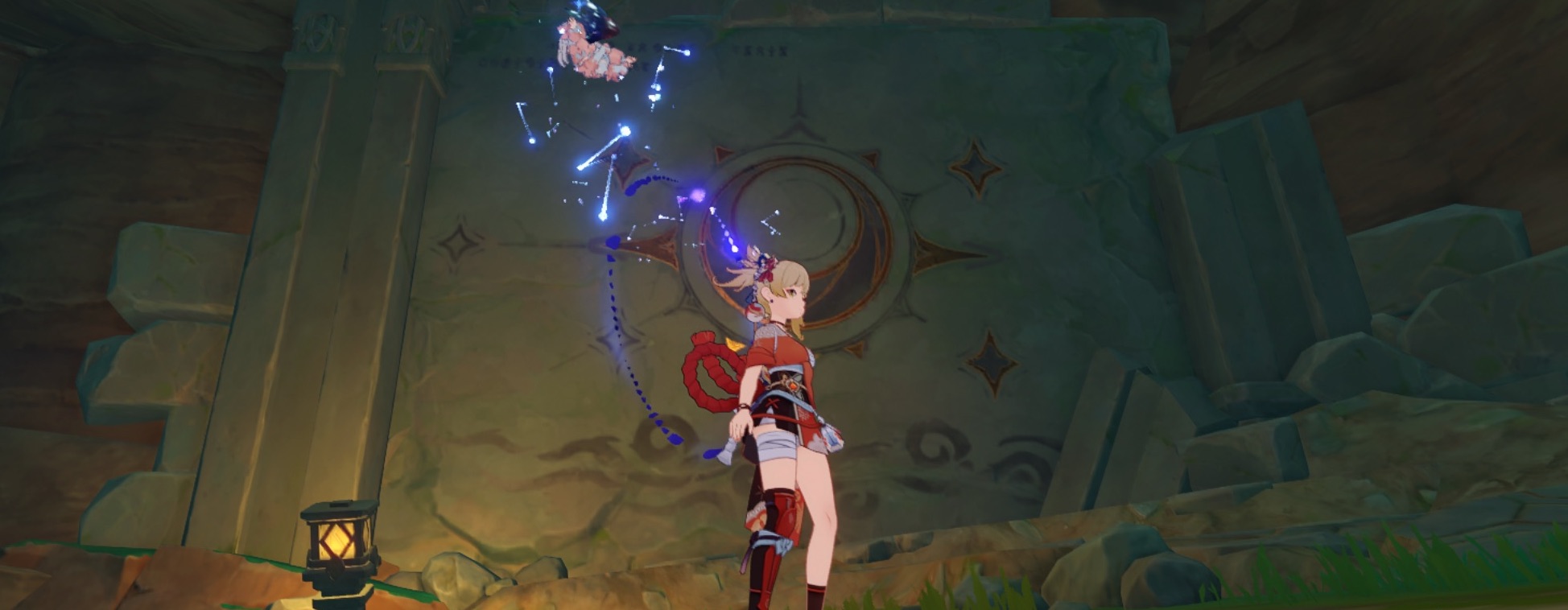
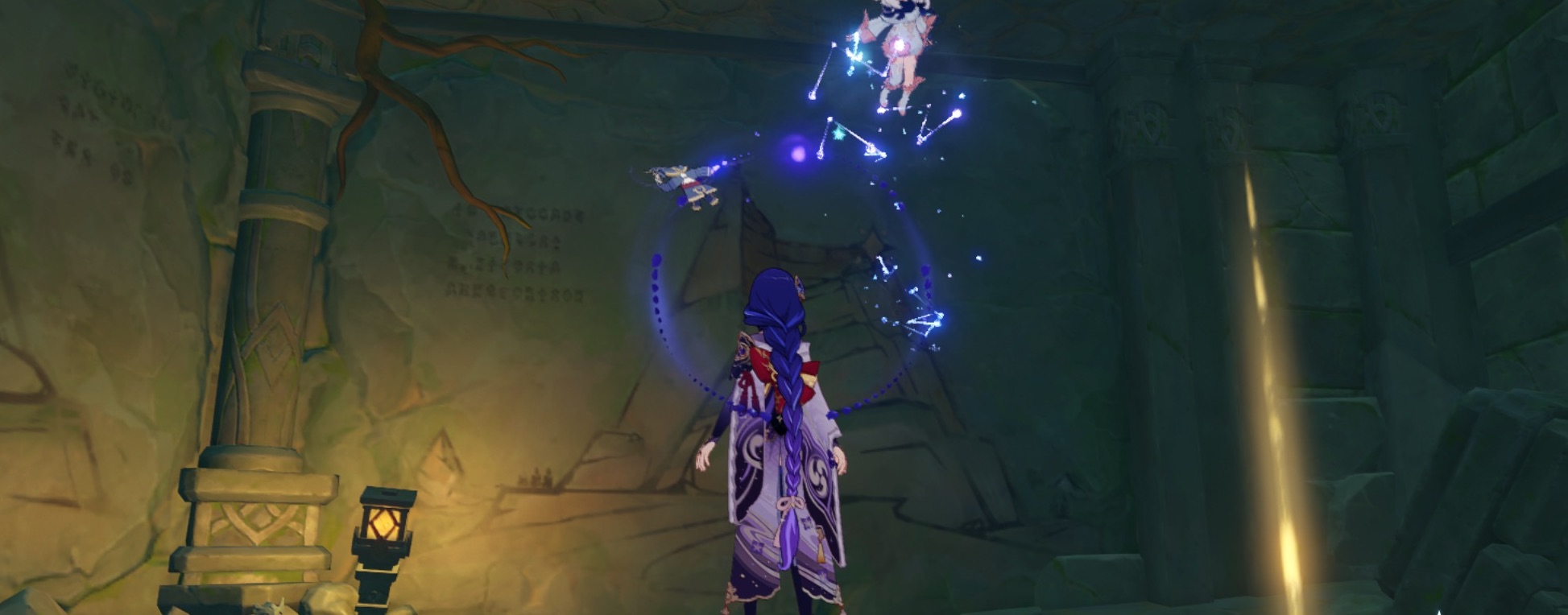
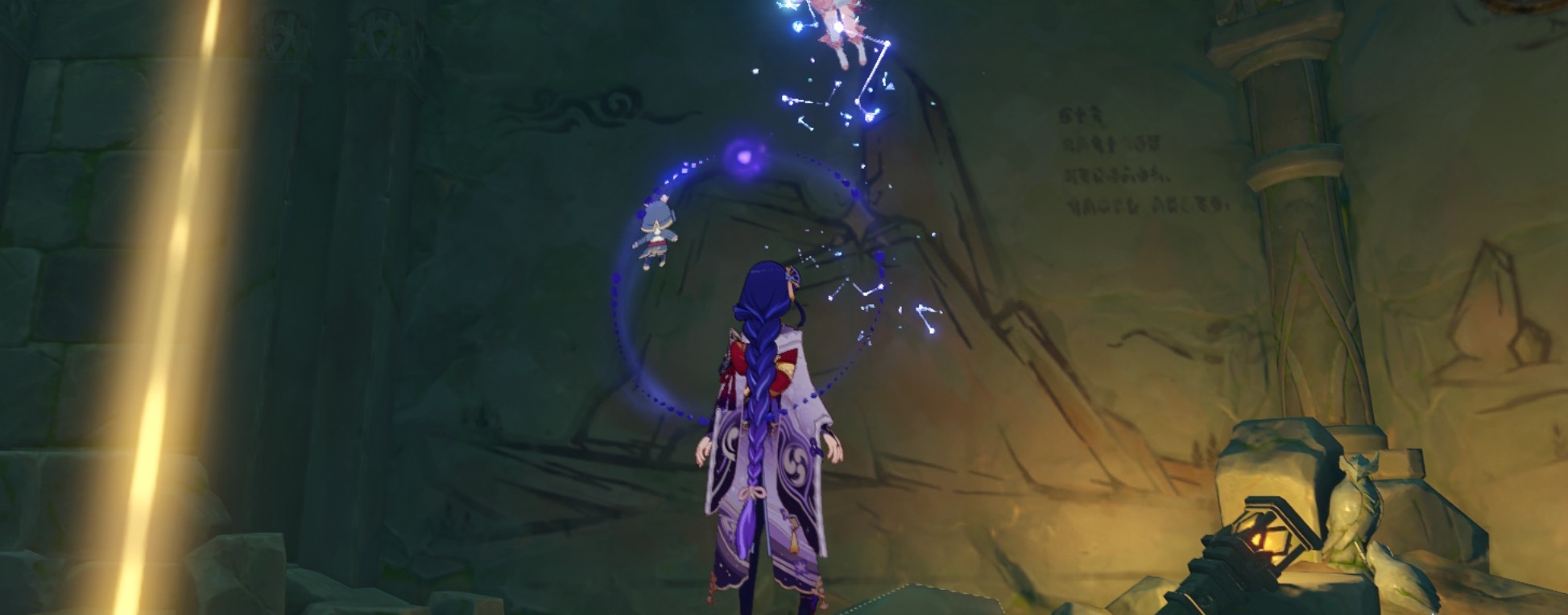
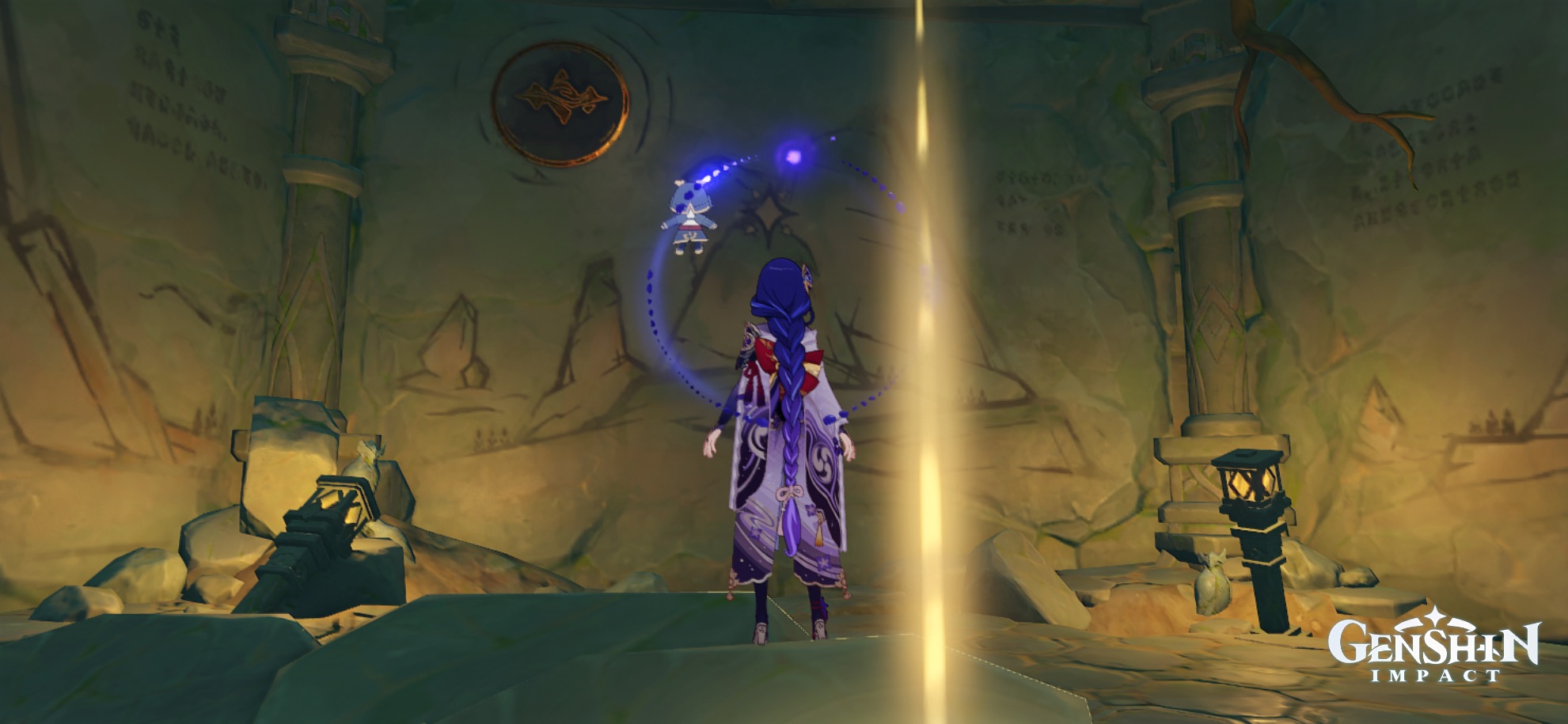
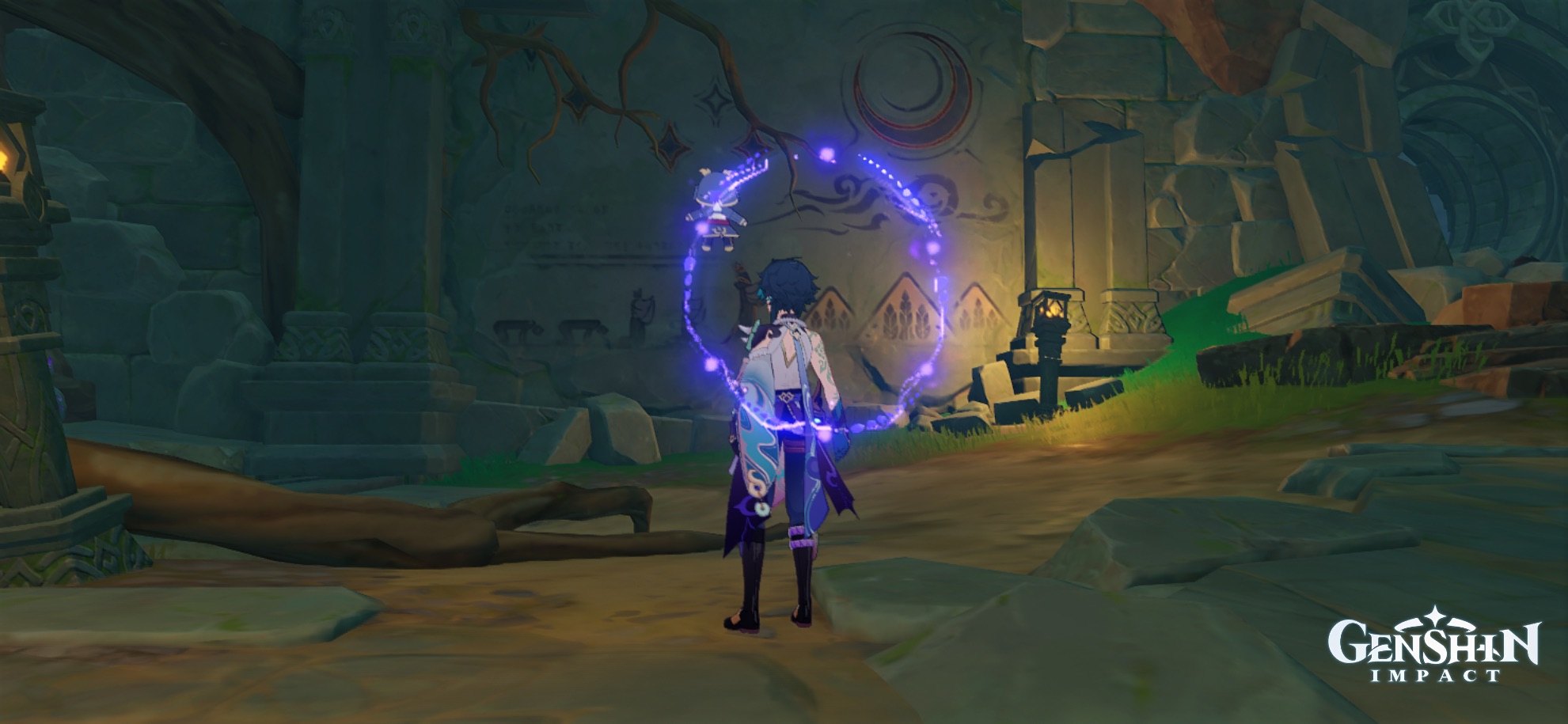
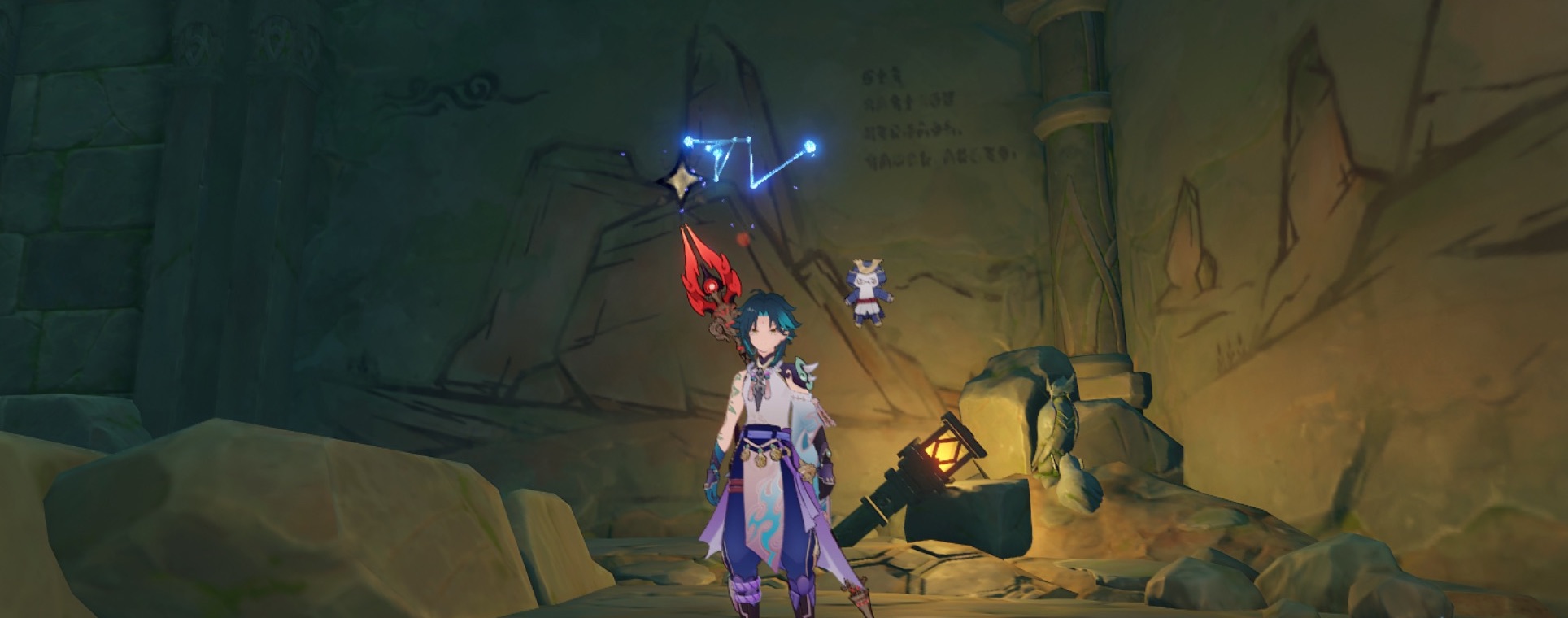
This version introduced the mysterious and misty Tsurumi island, which saw the reintroduction of fog mechanics. Tsurumi is also where the interesting quest involving Ruu (阿瑠) and Thunderbird took place.
There was once an ancient civilization on Tsurumi (probably Khaneriah). Later after a war with the gods, a fog appears on the island. A new group of people settle, including Ruu's tribe. Ruu liked to sing, and the Thunderbird enjoyed his singing, often visiting the island. Ruu's tribe thought this meant they should sacrifice Ruu to the Thunderbird so they killed the child. This infuriated the Thunderbird, who then killed the entire tribe and laid a curse on the island to repeat the incident for thousands of years. When the traveler arrives to the island and meets the ghosts of Ruu and the tribe, they help lift the curse of the island, ultimately by destroying the Tsurumi perch trees and bringing the Thunderbird pinion feather to Seirai where Ruu could sing for the Thunderbird to hear him again. Only then is the thunderous fog lifted from Tsurumi.
This sidequest is considered one of the best stories in the game to date. In this story, there is no 'good' or 'bad' per se. You can say the tribe is evil for killing the young Ruu. You can say the Thunderbird is evil for killing the entire tribe. Eventually the Thunderbird was slain by Beelzebul, the Raiden Shogun. The story is not about heroes or villains. It is about the tragedy of Ruu, the curse of the island, lifting it. This is history. People die. Things happen.
It is said that Inazuma is based on Japan. In Japan's north (Hokkaido) there live a people called the Ainu, an ethnic minority. There are various theories about the Ainu's history. It is believed the Ainu are the original inhabitants of Japan before the Yamato people arrived from mainland Asia. It is believed that the Jomon culture of ancient Japan was by the Ainu people. The Ainu language is considered an isolate, distinct from Japanese and most things on mainland Asia. The Ainu also have unique genetics (haplogroup D for the Y-DNA), which is different from the hg O and C commonly found in East Asia. The Ainu language is reflected in the choice of place names in Tsurumi island.
Ironically, while Hokkaido and the Ainu are concentrated in north Japan, Tsurumi is located near the south of Inazuma. This is a game and a work of fiction. Not everything has to correspond exactly to reality.
The Ainu people are also found in the Sakhalin island north of Hokkaido, so much of this exposition will focus on the Hokkaido-Sakhalin region of northeast Asia.
One of the main events of 2.2 featured Tartaglia and Xinyan. Why this pairing? It could be said the two represent the main groups of people that have ruled over the Sakhalin region in the past 1000 years: the 'Tatar' people and Ainu. The 'Tatar' term has been used to refer to the Mongol and Man people who ruled the Yuan and Qing dynasties. These dynasties have also ruled over the Sakhalin island, across the strait of Tatary. Sakhalin was also known as the Kuye island (库页岛) where Kuye or Guwei is the Nivkh name for the Ainu people. The Ming and Qing dynasties continued the Yuan administration system over Sakhalin.
So Tartaglia is the embodiment of the Tatar element, whereas Xinyan can be thought of as the embodiment of the Ainu element. How so? This goes back to how the Ainu people have different genetics from surrounding people in East Asia. This article is more about Genshin and less about genetics, so the genetic aspect is left for the interested reader to explore elsewhere. Xinyan is from Liyue, but it has already been stated that the Sakhalin region has been ruled by at least three Chinese dynasties in recent history: the Yuan, Ming, and Qing. Even then, there is a part of modern China that shares similar DNA to the Ainu people. Those familiar with global genetics should know which region of China this is referring to (Tibet). It is also related to Heizou's name (平藏).






